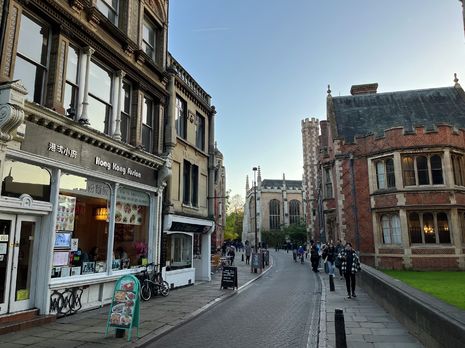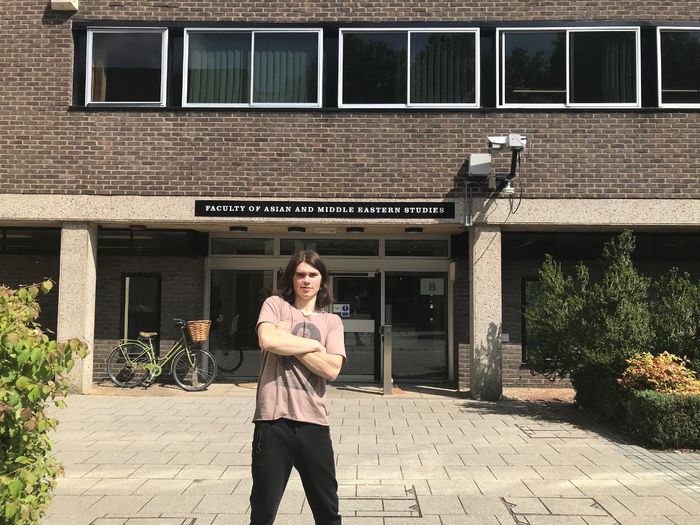‘A home away from home’
From the search for authentic cuisine to the lingering threat of discrimination, Rena Rawanchaikul speaks to Cambridge’s East and Southeast Asian communities and elucidates the role of their societies in student life

“I want to eat something that makes me feel something”, a Southeast Asian student said to me, clutching at the air in an attempt to convey their dedication towards searching for home food.
In almost every conversation I had, it was not long before food was brought up. With gastronomy being central to many East Asian and Southeast Asian cultures, many students described the challenge of finding authentic home cuisine in Cambridge, to which I am no stranger – I dedicated a not insignificant amount of my free time in first year going around Thai restaurants in Cambridge in an effort to find the place that best brought the flavours of Thai food to life. Southeast Asian students told me their cuisines, Malaysian in particular, is harder to find in Cambridge than East Asian cuisine, inevitably turning many students into better chefs.
“I want to eat something that makes me feel something”
For many East and Southeast Asian students, ethnic societies are the beating heart of their student communities, a “home away from home.” Kelly, a second year at Murray Edwards, mentioned how societies like ABACUS (Association of British and Chinese University Students) help to unite students and connect them with their culture, as students can actively engage with organised events. A sentiment shared by John, a second year at St John’s, who spoke warmly of informal gatherings of Korean students who met through CUKS (Cambridge University Korean Society), cooking Korean dishes and drinking soju.
Societies like these are often very tight-knit, which many students feel is in part fostered by a shared East or Southeast Asian culture that society more broadly may not necessarily understand. Another student who is involved in CUTS (Cambridge University Thai Society) and the ISC (International Student Community), however, made a distinction between societies aiming to provide representation of East or Southeast Asians in Cambridge and those providing a “comfort zone” for members.
“You just grew up doing different things and most importantly, acting differently. Sometimes you’ve got to put up an act with people, but acting 24/7 is tiring,” another student said to me. In the spaces engendered by these societies, students can reference culturally-specific concepts, concepts which are “sort of inextricable from your own identity,” Karen, a second year at St Edmund’s, explained. Students can also use words whose meaning is so grounded in culture that they are hard to accurately capture in English. Many do this by switching to their native language or using slang, such as Singlish (Singaporean English) or Manglish (Malaysian English). Many students code switch when speaking to students of other ethnicities, but feel that they can “let down their guard” among those who share the same linguistic or cultural background.
“There are so many cultural differences, it looks different, it feels different, things work in a different way, people are completely different.” John told me, describing the culture shock many endure when moving from their home country.
“As ever there is no homogeneity in lived experience”
Nonetheless, as ever there is no homogeneity in lived experience. Drexel, a third year at Lucy Cavendish, told me that mild cultural differences “rarely get in the way at all.” Brioni, a third year at Churchill who is from Hong Kong/China, spoke positively of the multitude of cultures in Cambridge and said that “it is nice that people are trying”. Karen too recalled her joy at celebrating Lunar New Year with her non-Malaysian friends. Despite this inherent variety, one unifying feature is at the very least an awareness of the possibility of discrimination and microaggressions.
Once, in a supervision, the topic of discussion was taste, and a student’s supervisor asked what kind of food the student and their supervision partner liked. The partner was from a country in the Middle East. He said he liked sushi. The student was from a Southeast Asian country. They said they liked curry. The supervisor pointed at the student and said, “You should like sushi!”, then pointed at the partner and said, “You should like curry!”.
“We just stared at each other because we were like… what do we say?”. To the student, their supervisor had only voiced beliefs intrinsic to society. “He’s vocalising something that no one else wants to vocalise”, they said. The same student tells me of how someone once shouted “Fucking foreigner!” at them on the street. “Fair, that’s true,” they said to me. “But I’m tired.”
Both John and Lily-Belle, a second year at Homerton, told me of how people can confuse you and other East Asians when you might not look similar. “Strangers saying ‘you look just like x person’ becomes very grating”, Lily-Belle said. John was in Spoons once when strangers came up to him and said, “Oh, do you speak Mandarin? I’d like to practise my Mandarin with you.” He told me of how East Asian tourists themselves can come up to you and start speaking Mandarin. Most students I spoke to do not believe that these microaggressions are malicious or intended to harm, but are frustrated and resigned to such experiences.
Discrimination can come in different forms, according to, for instance, how visibly Asian you look, or your gender. Karen noted that harassment on the street towards women tends to be more insidious, and less overt or physical than it might be for men.
The fetishization of Asian women reflects a broad and entrenched tendency with regard to Asian culture, which Lily-Belle believed was the result of “wider ignorance and historical orientalism”, and rests on stereotypes such as docility and exoticism. Satoki, a fourth year at St John’s, elaborated on this stereotypical view of East or Southeast Asia, where clichés of Japan can come to dominate its perception abroad: “That’s not actual Japan… Anime is not even in Japanese people’s minds a lot because what makes Japan great is, I’d say, more to do with organised society and manufacturing.”
When I asked what they wish general Cambridge society understood more about the East and Southeast Asian experience, what students said most often is for people to recognise that East Asia and Southeast Asia are not monoliths, which they feel is a common misconception. Some students also wanted people to know that there is not as big a gap between Asian international students and home students as is sometimes believed to be the case.
To be East or Southeast Asian in Cambridge often means forming deep connections within and between ethnic societies, bonding through a shared language and culture, and trying to satiate a longing for home food via searching by foot or creating by hand. But it also means living with an awareness of the possibility of discrimination, albeit within a community that is generally open, warm and welcoming.
 News / Cambridge students set up encampment calling for Israel divestment6 May 2024
News / Cambridge students set up encampment calling for Israel divestment6 May 2024 News / Cambridge postgrad re-elected as City councillor4 May 2024
News / Cambridge postgrad re-elected as City councillor4 May 2024 News / Proposed changes to Cambridge exam resits remain stricter than most7 May 2024
News / Proposed changes to Cambridge exam resits remain stricter than most7 May 2024 News / Some supervisors’ effective pay rate £3 below living wage, new report finds5 May 2024
News / Some supervisors’ effective pay rate £3 below living wage, new report finds5 May 2024 Fashion / Class and closeted identities: how do fits fit into our cultures?6 May 2024
Fashion / Class and closeted identities: how do fits fit into our cultures?6 May 2024






